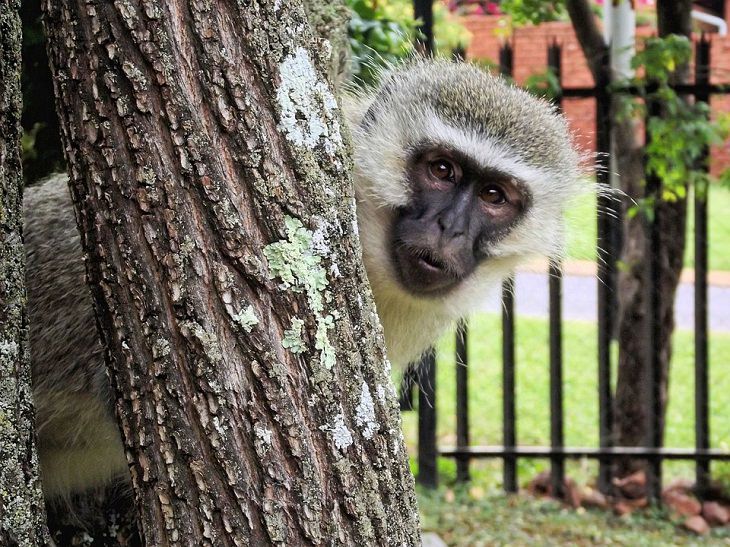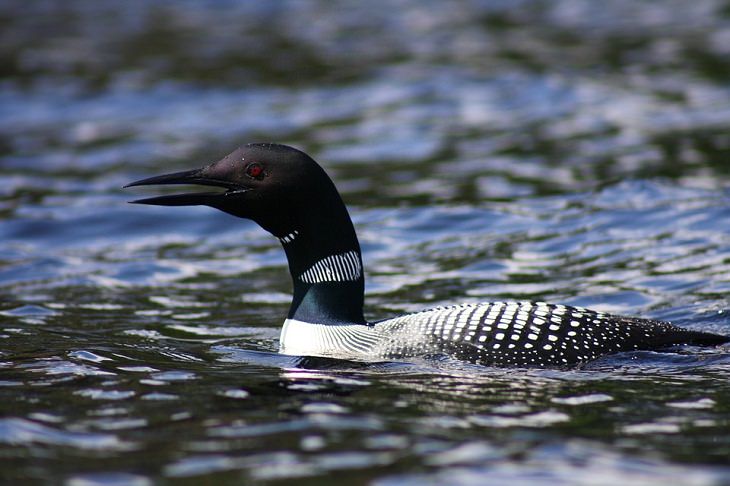
Humans aren’t the only species that are capable of communicating through sounds. The animal kingdom is filled with several members that have truly unique and remarkable ways of making contact. Yes, you have seen birds sing, cats meow and dogs bark. However, it has been found that a number of animals use sound to communicate with each other about their environment and feelings on a regular basis.
Here, we look at a few animals that communicate in the most fascinating ways by means of sound.

You might be aware that a number of primate species sound the alarm call when they sense danger nearby. However, vervet monkeys (Chlorocebus pygerythrus) of Eastern Africa go a step further. They are sophisticated communicator animals and can produce three distinctive semantic alarm calls in response to their three main types of predators: leopards, pythons, and eagle. Each call, incidentally, evokes a distinct and relevant anti-predator behavior. Some researchers also say that vervet monkeys have the ability to produce more than 30 different calls that generally range from serious predators to minor threats.

It is common among most male frogs to attract mates using distinctive sounds. They can range from high-pitched peeps to full-throated croaks. Interestingly, though, it has been found by researchers that city frogs and rainforest frogs don’t sing the same tune.
A study was released in 2018 that uncovered how Panama's tungara frogs adapted their mating calls in urban areas. In the absence of the large number of predators they usually find in the rainforests, these city frogs produced a larger list of melodies having greater complex vocalizations. The researchers also found that the urban frogs call faster, more frequently, and add more frills to their calls than their forest counterparts.
“Just as we change our social relationships in cities, animals are changing their relationships and their behavior in the radically-altered biological communities we are creating across the globe.” says study co-author Rachel Page.
To humans, these complex calls will sound like a low-pitched, video-game beeps.

Dolphins are intelligent creatures. We all know that. However, some species of dolphins are known to display remarkable forms of communication as well. Studies have revealed that bottlenose dolphins (Tursiops truncatus) develop individually distinctive signature whistles that they use in large group settings. This means these dolphins have a name for each member in the form of a whistle. Also, the studies have shown that these highly social mammals are receptive to the whistles of dolphins they know.
Amazingly, it has also been revealed that a bottlenose dolphin will not just respond when it hears the sound of its own signature whistle, but it will also whistle back an answer. "Having sounds that express identity might be a way for the group to know where each group member is at a given time and the specific identity of that dolphin," says Jeremy Karnowski, a University of California San Diego dolphin-communication expert. Dolphins are hence the only animals apart from humans that have shown an ability to transmit identity information independent of the caller's voice or location.
Further studies will now be needed to understand when and how often dolphins address each other and also to see whether dolphins use these whistles to talk about each other.

Loons (Gavia immer) are large, fish-eating birds and are known to have distinct and haunting vocalizations that have enchanted humans for centuries. These birds have four specific calls that have been classified as "The Wail," "The Hoot," "The Yodel," and "The Tremolo." Each of these calls plays a vital role in helping the loons establish and maintain their breeding territory and to communicate with their families and other loons. Each call serves a specific function: the wail is used for long-distance communication between mated pairs while the hoot is a soft, short call used for short-range communication between members of a loon family. The yodel is a sound only made by male loons when they feel threatened.
Perhaps the most fascinating sound that the loon produces to communicate is the tremolo, which is also known as the "crazy laugh." While it is usually made during territorial interactions, it sounds incredibly melodious to the ears. Because they sound so fascinating, the call of the loon has now become one of the most prominent characteristics of these birds.
Listen to the mesmerizing sound of the loon in the video below:

Can you imagine a massive silverback gorilla merrily composing a song and humming in the wild? As weird as this visual might feel, it is true. Researchers found that gorillas in the wild will sing and hum when they eat. This is done primarily for two reasons: to show that they are happy with the meal and to communicate with other members that food is ready.
Researchers studied two groups of wild western lowland gorillas in the Republic of the Congo and discovered that the hum of the gorillas was a prolonged, tonal low-frequency sound. Their singing, meanwhile, was marked by several short and differently pitched sounds in close succession.
"Food-associated calling could represent a form of collective decision-making in the feeding context and allow group members to coordinate their feeding activities," the researchers have written in the study. They also observed that the dominant silverback male gorillas were the most vocal when it came to their meals. "We think he uses this vocalization to inform the others 'OK, now we're eating,'" says one of the researchers.
Many species of birds and mammals produce food-associated vocalizations, including chimps and bonobos. Now gorillas too fall in that category.

Elephants are known to make deafening trumpet-like calls that make them appear to be the loudest animals on earth. However, not many know that these giant creatures also produce low-frequency noises between 1 to 20 Hertz, which is also known as infrasound. These low-frequency noises help elephants to communicate and hear messages from distances of up to 10 kilometers (6.2 miles). These findings were revealed in a study by an international team of voice researchers and cognitive biologists.
The human ear can hear many elephant sounds, but their infrasonic sounds are below the range of our hearing. These low-frequency sounds provide elephants with a "private" communication channel and help the animals in maintaining their complex social life. For instance, these infrasonic sounds allow the elephants to send distress calls or warnings. This can be observed when a group of elephants suddenly lift their heads from drinking or eating and act a little odd. This usually means they have heard a low-frequency sound from another member.

Prairie dogs (Cynomys) are members of the squirrel family that have generally been considered as pests. However, it has been found that these little rodents have a form of communication that can be considered as a unique form of language. Prairie dogs are extremely social animals that live in large colonies and have been observed making a wide range of noises, including squeaks and yips.
Con Slobodchikoff, a professor at Northern Arizona University, took a great interest in the way these little animals communicated and decided to decode it. The professor and his colleagues studied and recorded the different noises of the prairie dogs for 30 years. He found that the bark of a prairie dog can indicate the type and direction of an approaching predator. In fact, it can also describe its color.
The professor also concluded that since prairie dogs are confronted with such a vast variety of predators every day, they have made "words" to describe them all. "They have words for different predators, they have descriptive words for describing the individual features of different predators," says Slobodchikoff. Furthermore, it was also discovered that individual prairie dogs have different tonal qualities but they use the same words to describe a particular predator so that each member of the colony understands it. Amazingly, the animals can also specify the size, color, direction, and speed of travel of an approaching predator.
Thus, these tiny rodents employ a form of language that is even more sophisticated than what monkeys or dolphins are known to have used. This remarkable research on prairie dogs may well prove to be one of the most important discoveries in linguistics and the harmonic structure of language.
Here's an amazing video detailing what the researcher discovered: